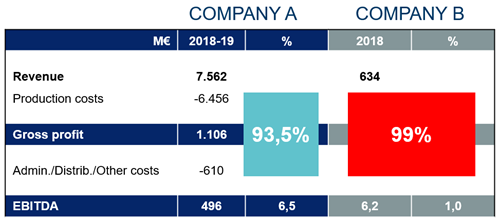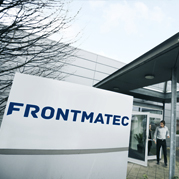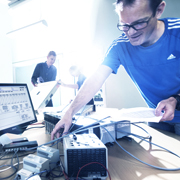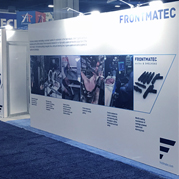Nowadays none of us can understand evolution without technology. Each wave of new disrupting technology has brought a new era of evolution. Especially within the industry, we must emphasize the importance of new technology to do things in a new and smarter way. Only in that way, we may assume that technology can help us in putting automation for evolution (A-volution).
When we talk about the daily lifestyle there is no doubt about the impact of having a smartphone (a computer) in our pocket. No doubt that smartphones have revolutionized the way we interact with people, services and even companies. Because we have everything in just one device, many processes are centralized and automated today – processes that earlier demanded multiple devices to handle.
76% of people from advanced economies owns a smartphone
We all want to have all possible services (at least the ones, we are interested in) in our hand, and as much integration and automation as possible. And we accept paying a substantial difference in the price for the phone to get the right integration and automation.
Industrial context
This A-volution concept is not so extended in within the industry. There are still companies working with different devices, paper, going back and forth, sharing opinions instead of objective data. They have not accepted yet the automated evolution that technology can give them.
It is really interesting that when looking at an enterprise level, decisions regarding technology are complicated, but when it comes to the personal level it is completely the opposite (in the example of smartphones). There is no doubt that the concept of a smartphone is needed.
And sometimes some of the answers to the point are:
- “I think this is for big companies.”
- “This will require a huge investment.”
- “There is nothing to improve.”
- “Let’s wait for operators to receive a request for it.”
Decision periods are long, business cases are not well aligned on the strategy of the business, pain points are not well approached. After all, the decision is taken when issues are flooding the business, or when people are not aligned towards evolution.
Centralization and insights
The first important concept for the smartphone is that we are able to have all services in one place. All information and functionalities are in our hands. And, if we want, we can set up notifications and alerts for that service – to receive relevant information.
There are two main reasons for downloading an app for our smartphone: (1) we know we need a particular service, or (2) we want to try a particular service. Both situations are the same in the industry: (1) we know a technology will bring value to us, and (2) we want to prove a specific concept to validate its feasibility and value. This is the approach to follow in industry.
At the end, all we need is having all equipment and systems integrated and centralized in order to generate insights from data gathered, build digital functionalities to help operations, and take decisions based on objective information.
There is no need to continue having manual actions, different and isolated systems or devices, the duplicity of data sources, or even people trying to merge and digest data. This has been fully replaced by a smartphone, for our daily life. And this must be replaced by a smart system and technology within the industry as well.
It is about benefits and not size of business
Anyone can and must be able to get access to technology despite the size of the business. Not matter if we are running a 5.000 M€ or 50 M€ business. The most important point to move towards A-volution is the ratio between operating income and total revenues, meaning, how efficient are the operations.
The following example takes 2 real companies with different sizes and different performances. Company A traditionally invested in technology to improve the process, while Company B did not. Company B is running the business as usual, without considering the value out of technology.

If both companies are from the same sector, there should not be so important differences. Technology and automation are the difference. Both bring visibility to the process, integration to systems and equipment, minimize indirect times and provide analysis to make the right decisions. All this should go in the direction of generating benefits to increase the ratio of operating income.
Technology and A-volution as per business needs
In conclusion, and coming back to the main topic, technology has been released to help to automate tasks and improving processes. So, we must always keep the desire for evolution based on what our business is needing. We should consider the evolution of technology to decide what services are applicable to the business, and what are the benefits out of the investment.
Who knows if in future there won’t be smartphones anymore and we will use a different way? But, what I am pretty sure about is the fact that all services will still be centralized and automated. And our main concern will be asking for the information we need at any time without the need to wait.
Author

Oriol Llargués
Manager
ola@frontmatec.com
+34675820857

 EN
EN
 English
English
 中文
中文
 Español
Español
 Deutsch
Deutsch
 Français
Français





